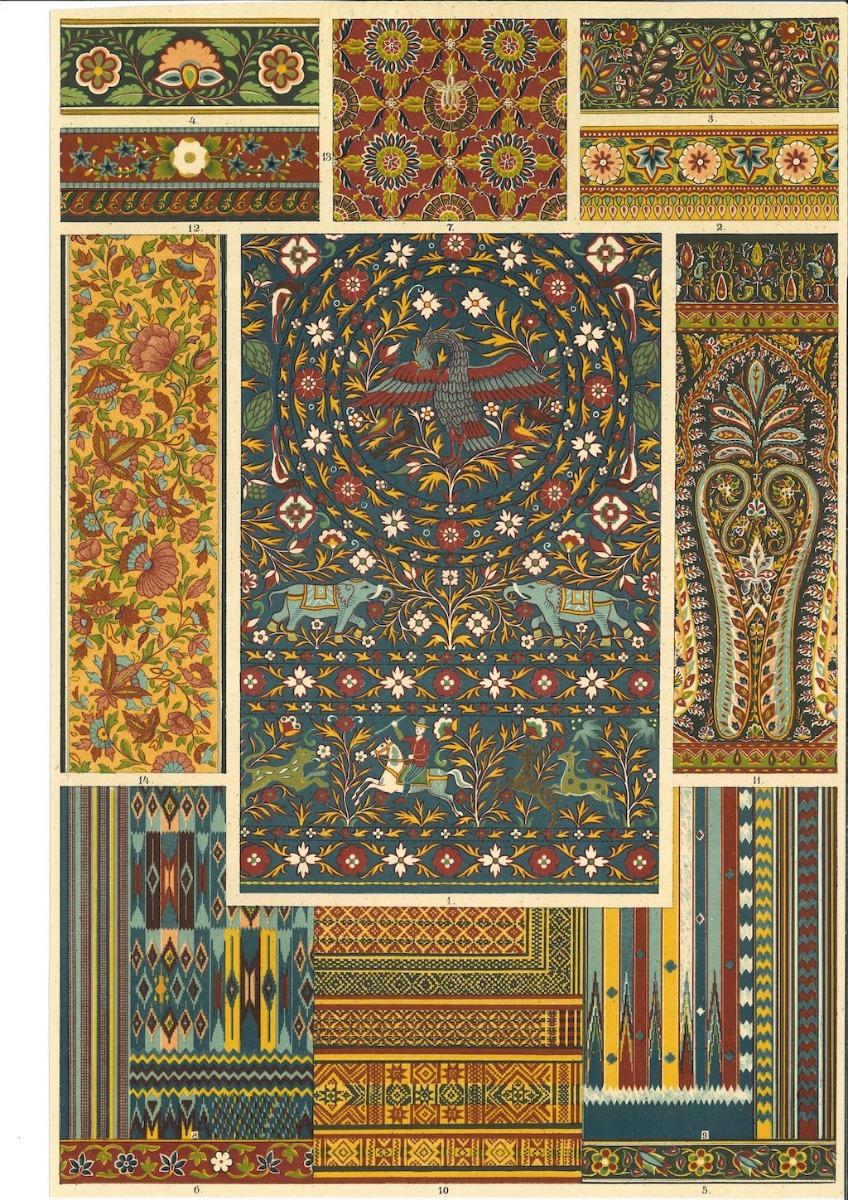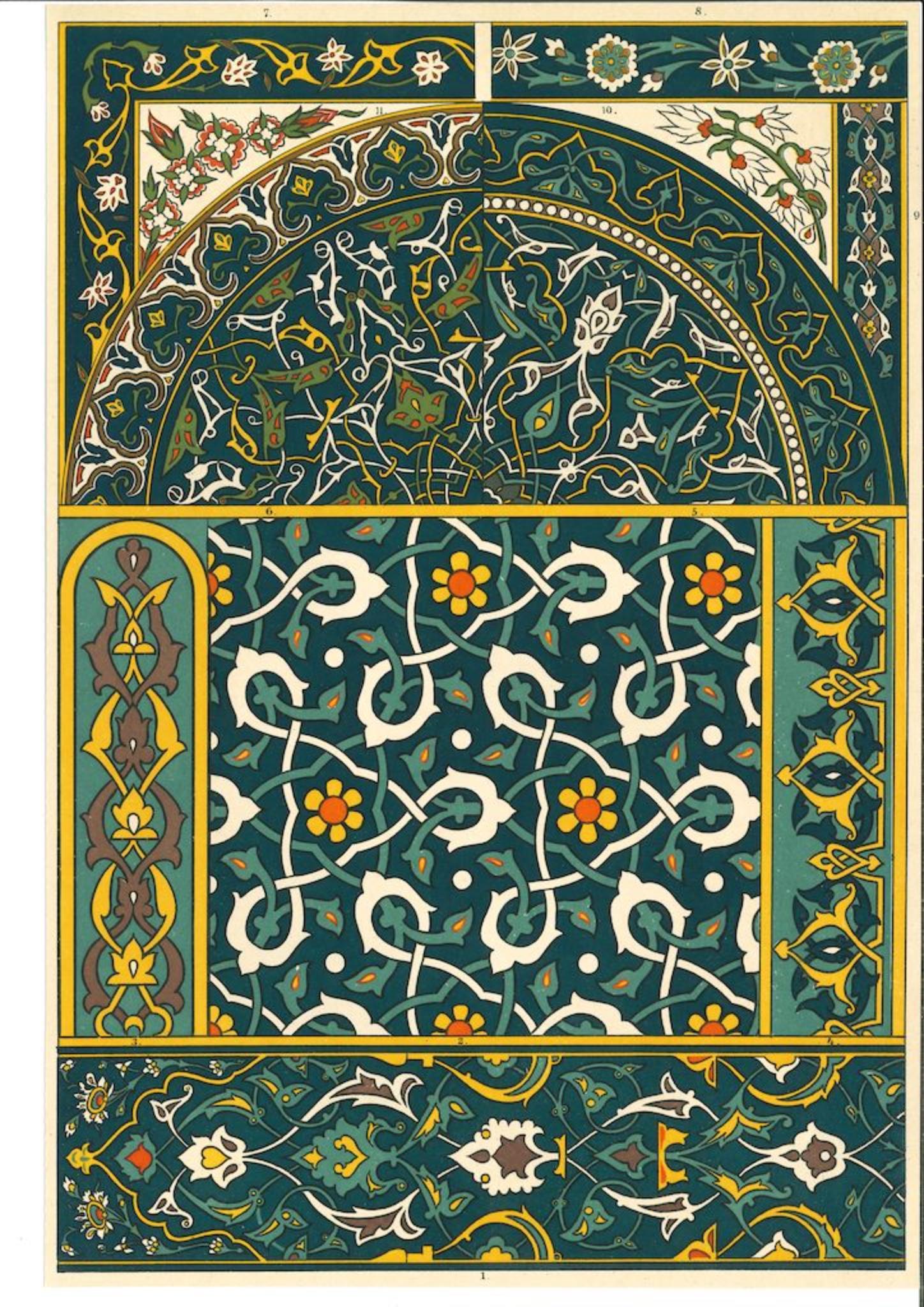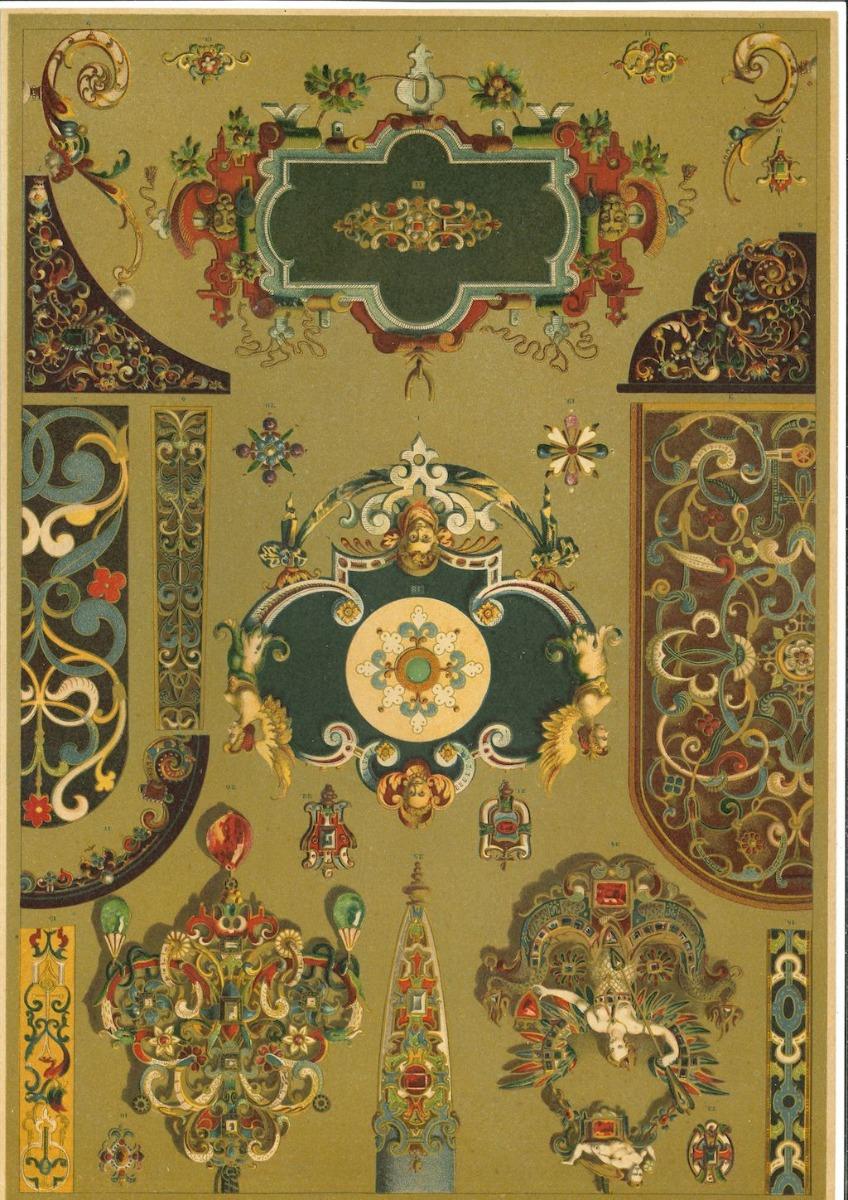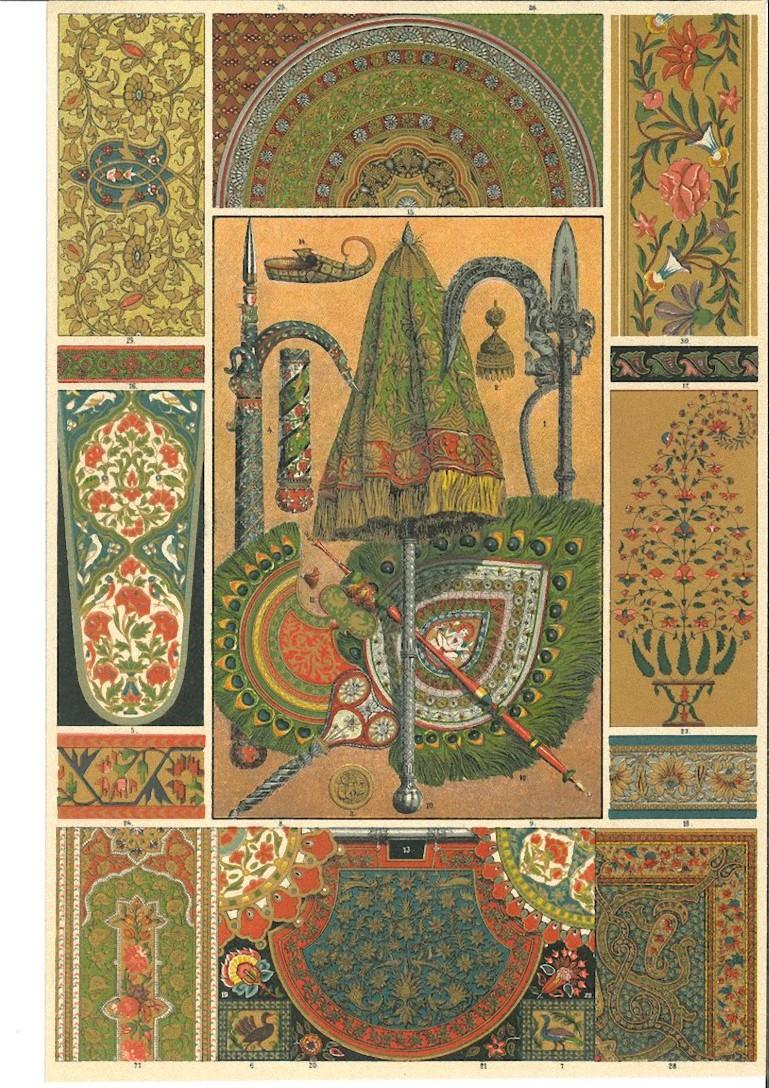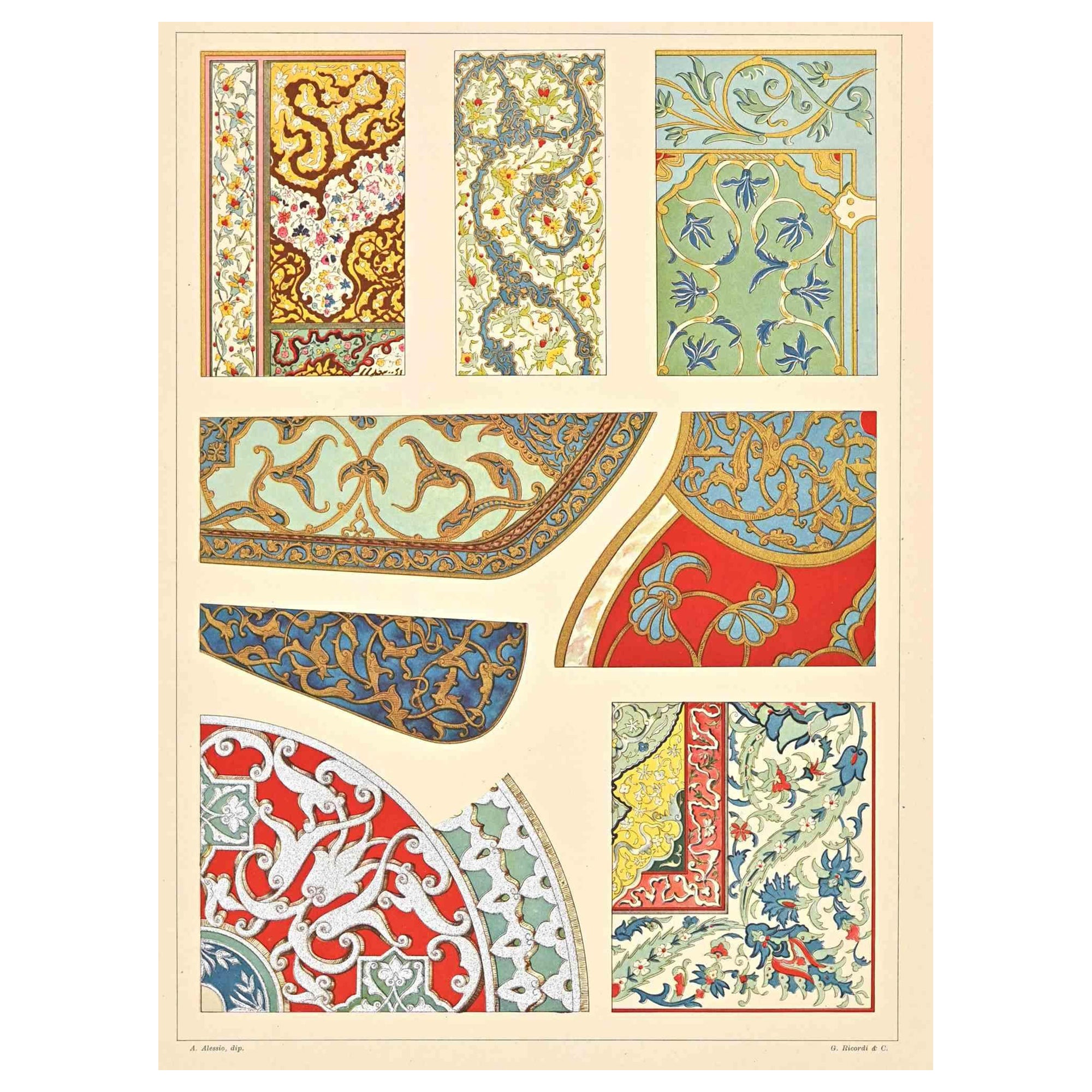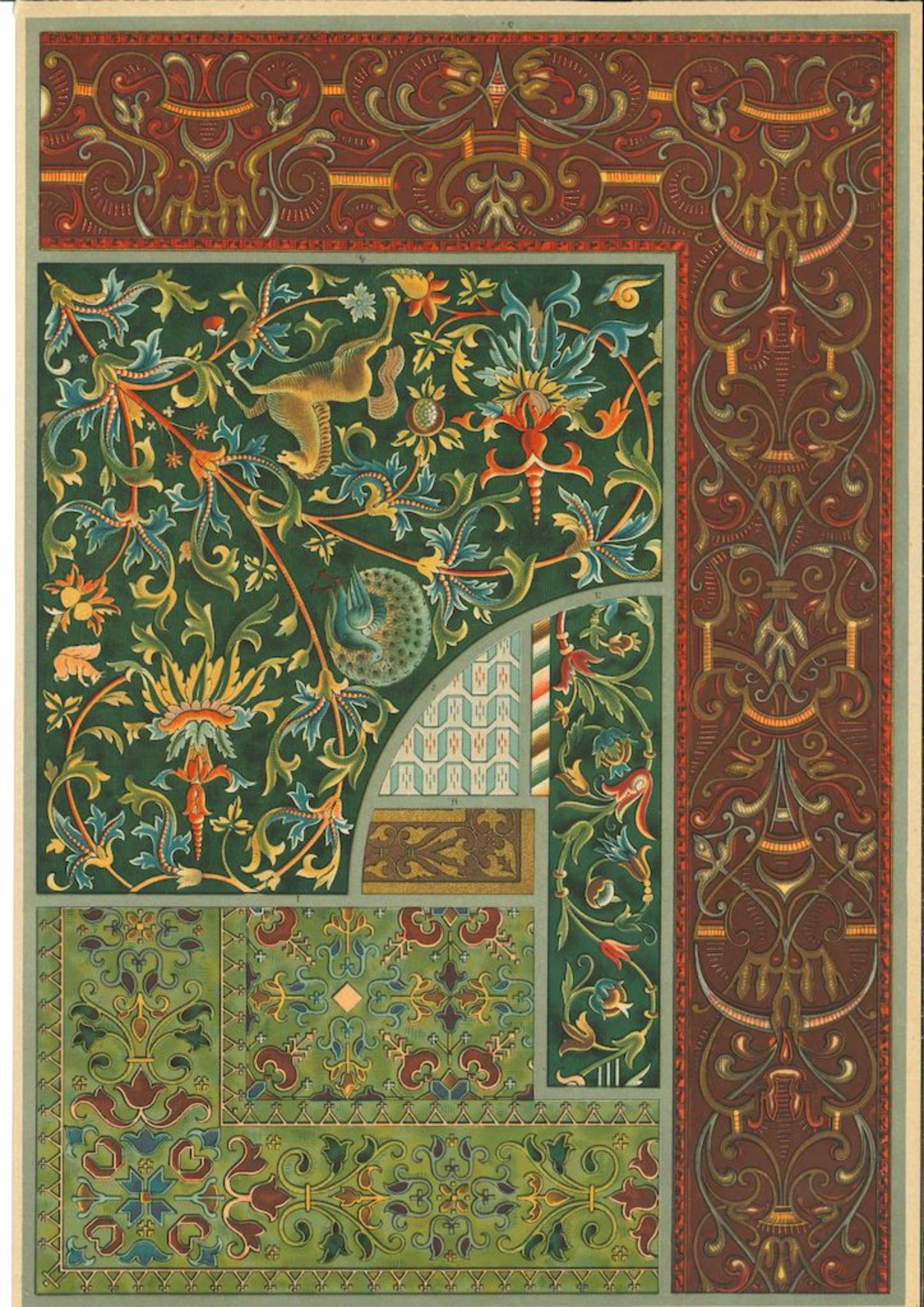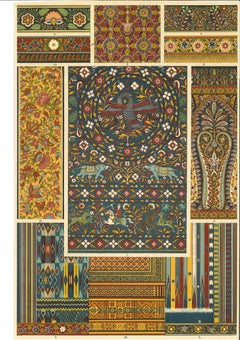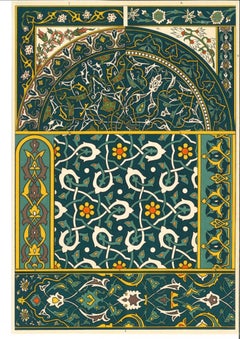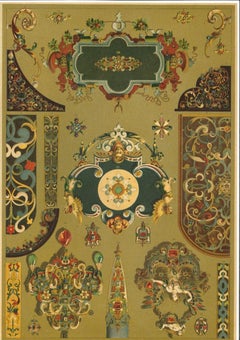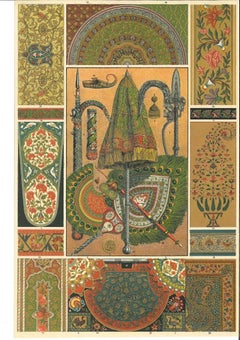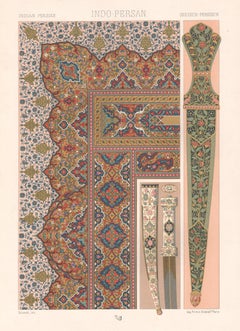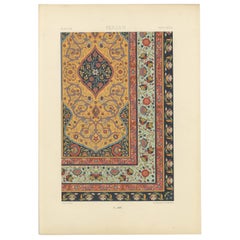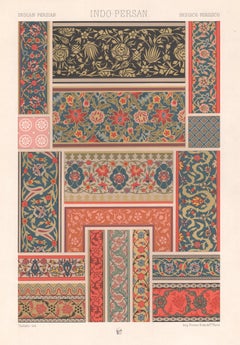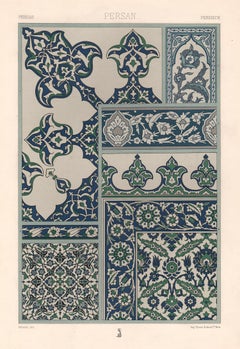Items Similar to Decorative Motifs of the Persian Renaissance - Chromolithograph - 20th Century
Want more images or videos?
Request additional images or videos from the seller
1 of 2
UnknownDecorative Motifs of the Persian Renaissance - Chromolithograph - 20th CenturyEarly 20th Century
Early 20th Century
$176.25
$293.7540% Off
£134.97
£224.9440% Off
€150
€25040% Off
CA$247.72
CA$412.8740% Off
A$271.74
A$452.8940% Off
CHF 142.18
CHF 236.9640% Off
MX$3,234.19
MX$5,390.3140% Off
NOK 1,795.77
NOK 2,992.9540% Off
SEK 1,684.46
SEK 2,807.4440% Off
DKK 1,142.69
DKK 1,904.4840% Off
About the Item
Decorative Motifs of the Persian Renaissance is a vintage chromolithograph realized by an anonymous artist in the early 20th Century.
Good conditions.
The artwork represents Decorative motifs of the Persian Renaissance in a well-balanced composition.
- Creation Year:Early 20th Century
- Dimensions:Height: 11.82 in (30 cm)Width: 7.88 in (20 cm)Depth: 0.04 in (1 mm)
- Medium:
- Period:
- Framing:Framing Options Available
- Condition:Insurance may be requested by customers as additional service, contact us for more information.
- Gallery Location:Roma, IT
- Reference Number:Seller: M-1169001stDibs: LU65037761762
About the Seller
4.9
Platinum Seller
Premium sellers with a 4.7+ rating and 24-hour response times
1stDibs seller since 2017
7,815 sales on 1stDibs
Typical response time: 1 hour
- ShippingRetrieving quote...Shipping from: Monaco, Monaco
- Return Policy
More From This Seller
View AllDecorative Motifs - Original Chromolithograph - Early 20th Century
Located in Roma, IT
Decorative Motifs of the Indian Renaissance is a vintage chromolithograph realized by an anonymous artist in the early 20th Century,
Good conditions.
Category
Early 20th Century More Prints
Materials
Paper, Lithograph
$176 Sale Price
40% Off
Decorative Motifs - Vintage Chromolithograph - 20th Century
Located in Roma, IT
Decorative motifs is a vintage chromolithograph print realized by an anonymous artist in the early 20th Century.
Good conditions.
The artwor...
Category
Early 20th Century Figurative Prints
Materials
Lithograph
$176 Sale Price
40% Off
Decorative motifs of the German Renaissance -l Chromolithograph - 20th Century
Located in Roma, IT
Decorative motifs of the German Renaissance is a vintage chromolithograph realized by an anonymous artist in the early 20th Century.
Good conditions.
The artwork represents Decorat...
Category
Early 20th Century Figurative Prints
Materials
Paper, Lithograph
Decorative Motifs - Original Chromolithograph - Early 20th Century
Located in Roma, IT
Decorative Motifs of the Indian Renaissance is a vintage chromolithograph realized by an anonymous artist in th early 20th Century.
Good conditions.
Category
Early 20th Century More Prints
Materials
Paper, Lithograph
$176 Sale Price
40% Off
Decorative Motifs- Persian - Chromolithograph by A. Alessio - Early 20th Century
Located in Roma, IT
Decorative Motifs - Persian Styles is a print on ivory-colored paper realized by Andrea Alessio in the early 20th Century. Signed on the plate on the lower.
Vintage Chromolithogra...
Category
Early 20th Century Modern Figurative Prints
Materials
Lithograph
Decorative motifs of the German Renaissance - Chromolithograph - 20th Century
Located in Roma, IT
Decorative motifs of the German Renaissance is a vintage chromolithograph realized by an anonymous artist in the early 20th Century.
Good conditions.
The artwork represents Decorat...
Category
Early 20th Century Figurative Prints
Materials
Paper, Lithograph
You May Also Like
Indian-Persian, French antique 19th century Racinet art design lithograph print
Located in Melbourne, Victoria
'Indian-Persian - Indo-Persian - Indisch-Persisch'
Late 19th century interior design chromolithograph, from Racinet’s ‘L’Ornement Polychrome’, 1887. Published in Paris.
Albert Raci...
Category
Late 19th Century French School Interior Prints
Materials
Lithograph
Persian Carpet Border Print – Antique Lithograph of Floral Rug Ornament, c.1869
Located in Langweer, NL
Persian Carpet Border Print – Antique Lithograph of Floral Rug Ornament, c.1869
This richly detailed chromolithograph presents a masterful reproduction of Persian carpet design, sho...
Category
Antique Mid-19th Century French Prints
Materials
Paper
Indian-Persian, French antique 19th century Racinet art design lithograph print
Located in Melbourne, Victoria
'Indian-Persian - Indo-Persian - Indisch-Persisch'
Late 19th century interior design chromolithograph, from Racinet’s ‘L’Ornement Polychrome’, 1887. Published in Paris.
Albert Raci...
Category
Late 19th Century French School Interior Prints
Materials
Lithograph
Persian, French antique 19th century Racinet art design lithograph print
Located in Melbourne, Victoria
'Persian - Persan - Persisch'
Late 19th century interior design chromolithograph, from Racinet’s ‘L’Ornement Polychrome’, 1887. Published in Paris.
Albert Racinet's 'L' Ornement Po...
Category
Late 19th Century French School Interior Prints
Materials
Lithograph
Persian, French antique 19th century Racinet art design lithograph print
Located in Melbourne, Victoria
'Persian - Persan - Persisch'
Late 19th century interior design chromolithograph, from Racinet’s ‘L’Ornement Polychrome’, 1887. Published in Paris.
Albert Racinet's 'L' Ornement Po...
Category
Late 19th Century French School Interior Prints
Materials
Lithograph
17th–18th Century French Decorative Textile and Wallpaper Designs, Plate LXXXVI
Located in Langweer, NL
17th–18th Century French Decorative Textile and Wallpaper Designs, Plate LXXXVI
This stunning chromolithograph, Plate LXXXVI from *L'Ornement Polychrome*, presents a collection of r...
Category
Antique Mid-19th Century French Prints
Materials
Paper
More Ways To Browse
Antique Persian Prints
Salvador Dali Papillon
Salvador Dali Religious
Seuss Serigraph
Sharon Hayes
Shepard Fairey Interpol
Shepard Fairey Kurt Cobain
Soviet Rowing Poster
Stained Glass Rondels
Studio Ghibli
Toussaint Watches
Triumph Bicycles
Trooping The Colour Vintage Poster
Vintage Airborne Posters
Vintage Bahamas Travel Posters
Vintage Celtics Poster
Vintage Dr Gonzo
Vintage Food And Wine Posters
